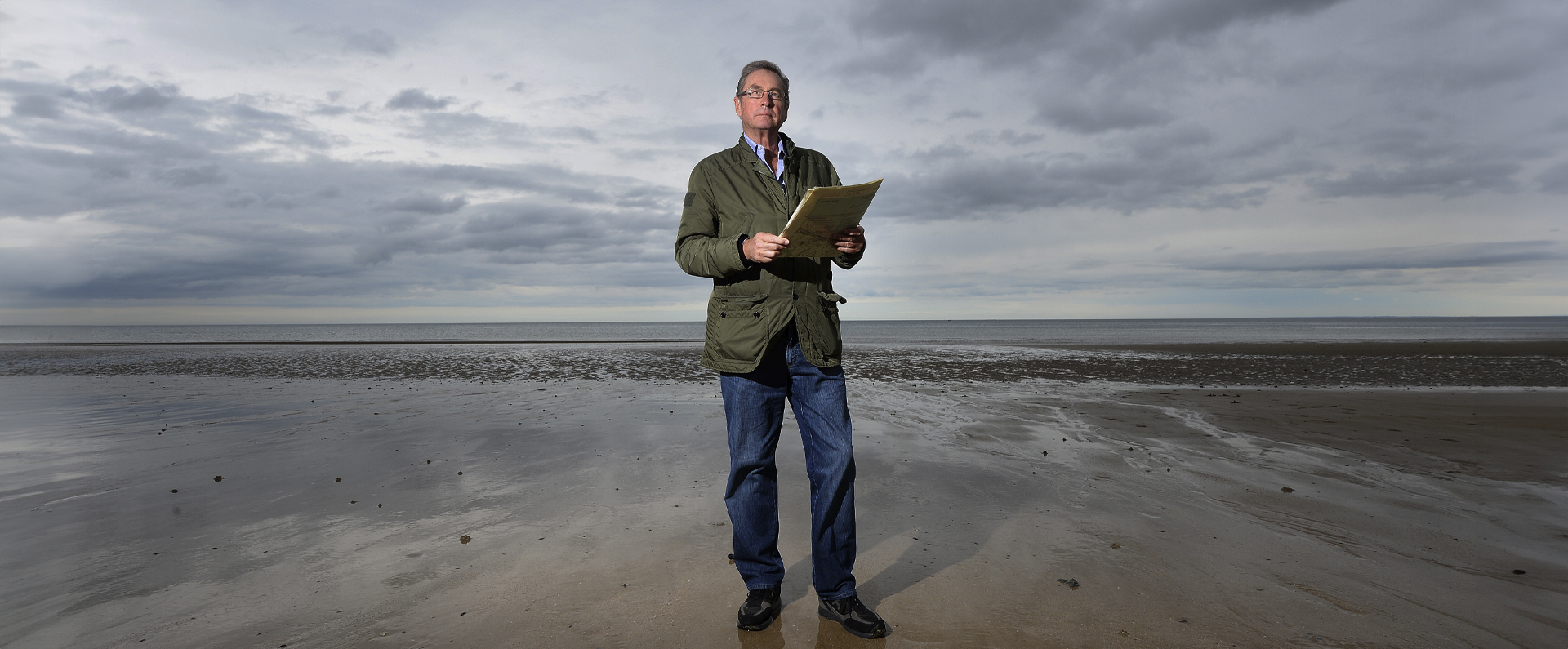
Published in Britain at War in July 2016.
Captain John Leslie Green VC: sacrifice
John Leslie Green was born in Buckden, Huntingdonshire (the village is now in Cambridgeshire) on 4 December 1888. He was one of three children and his father, also called John, was a landowner and Justice of the Peace (JP). The young Green, who was known as Leslie to distinguish him from his father, was educated at Felsted School in Essex. After leaving school, he studied at Downing College, Cambridge, where he gained an honours degree in natural sciences and was a good sportsman, including being a keen rower. He trained for a career in medicine at St Bartholomew’s, London, and, after qualifying in 1913, became house surgeon at Huntingdon County Hospital.
Shortly after the outbreak of the Great War in August 1914, Green, then aged twenty-five, was commissioned into the Royal Army Medical Corps and attached as Medical Officer to the Staffordshire Regiment, and, a year later, to 1/2 North Midlands Field Ambulance before finally transferring to the 1/5th Battalion, the Sherwood Foresters (the Nottingham and Derbyshire Regiment). On New Year’s Day 1916, he married Edith Moss, a fellow doctor.
On 1 July 1916, the first day of the Battle of the Somme, Green was located at Pommier, France, and the task of his division that day was to capture Gommecourt Wood on the northern side of Gommecourt village. Like most attacks on 1 July, things did not go according to plan and there were massive casualties.
Just before the battle commenced, the 1/5th Sherwood Foresters left Pommier for Foncquevillers and, at 6.25 am on 1 July, they moved up to the muddy assembly trenches. An hour later, they moved off in three waves: the advancing troops faced a heavy machine-fun fire from the wood and heavy smoke.
Green, who was by now a captain, advanced at the rear of the battalion and, when he reached the German wire, found an officer, Captain Frank Robinson, lying badly wounded and entangled in the wire.
Despite being under a heavy fire, Green, who already had a wound himself, went forward to reach Robinson. Green dragged the injured officer to a shell-hole where he dressed his wounds despite coming under further fire from bombs and grenades. Next, Green carried Robinson back to the British positions but, just as he [Green] was about to reach safety, he was shot again and fatally wounded. On 3 July, just two days after the incident, Robinson also died from his wounds.
By the time the Sherwood Foresters were relieved at 6.10pm on 2 July, they had 491 casualties – dead and wounded – out of the 734 men that they had started with. Green was buried at Foncquevillers Military Cemetery, while Robinson was buried at Warlincourt Halte British cemetery.
The general commanding 139th Brigade wrote a letter of condolence to Green’s widow which stated: “Dear Mrs Green, I have seen the letter you wrote to the officer commanding the 5th Sherwood Foresters, asking for news of your husband. I am deeply grieved to have to tell you that there is no doubt that your husband was killed on 1 July, and that I should like to say how much I feel for you in your sorrow, but at the same time I must express my intense admiration for the manner in which he met his death…”
The Green family had suffered another tragedy the previous year when Green’s brother, Second Lieutenant Alan Green, of the 1/5th Staffordshire Regiment, was killed in action on 2 October 1915 at the Battle of Loos. It meant that by the summer of 1916 Green’s parents, who also had a daughter, had lost both their sons to the war.
Leslie Green’s posthumous VC “for most conspicuous devotion to duty” was announced on 5 August 1916. His decoration was presented to his widow, who worked at Nottingham Hospital, by George V at an investiture in Buckingham Palace on 7 October 1916.
Green’s widow later remarried and presented her first husband’s medals to the Royal Army Medical Corps in Aldershot, Hampshire. Today they are on display at the Army Medical Services Museum in Mytchett, Surrey.
In 1920, Green’s father wrote to his local parish council asking for permission to build a small war memorial on land he owned: he wanted it dedicated to those from Buckden who had given their lives during the war. For some inexplicable reason, the offer was rejected but John Green went ahead and erected a memorial stone in 1921 on land he owned next to Coneygarths, the family home. Although it is meant to be in memory of all those from the village who died, only the names of his two sons appeared on the memorial.
Over the decades, the memorial fell into a state of disrepair but it was restored in before 1 July 1986, the 70th anniversary of the Battle of the Somme and of Leslie Green’s death. Leslie Green is also listed on different memorials at St Mary’s Church, Buckden, and at Downing College, Cambridge. There is also a plaque at Felsted School, Essex, that is dedicated to both Green and another former pupil, Lieutenant Walter Hamilton, who was awarded the VC for bravery during the Afghan War of 1879.
Incidentally, while I do not, of course, own Green’s medal group, I am the custodian of Hamilton’s medal group having bought it at a Spink auction in London in 1998.
* No VCs were gazetted in July 1916 so Lord Ashcroft has instead chosen for his monthly write-up one of the recipients whose VC was announced in early August 1916.
Download a PDF of the original Britain at War article
For more information, visit:
LordAshcroftOnBravery.com


